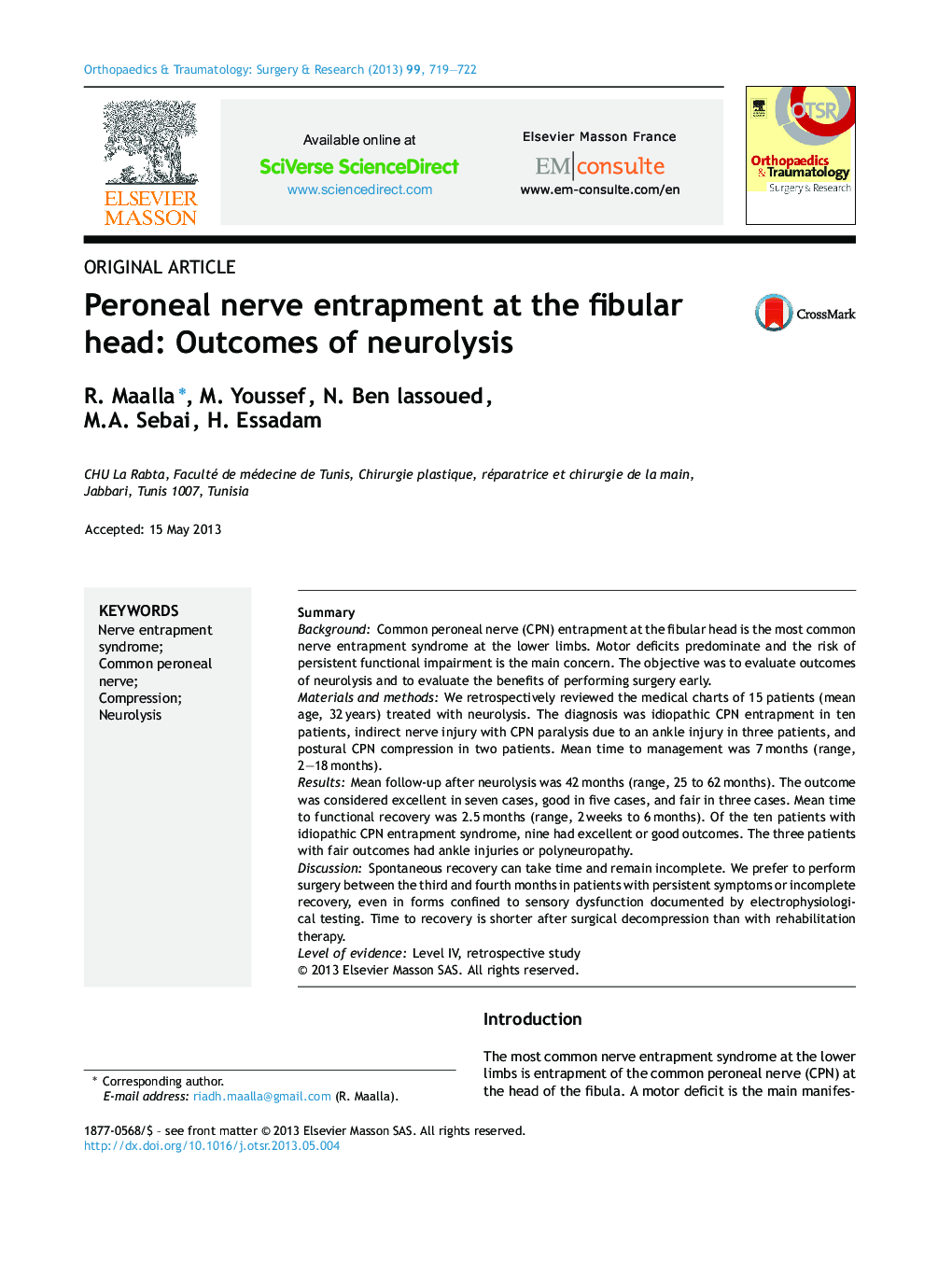| Article ID | Journal | Published Year | Pages | File Type |
|---|---|---|---|---|
| 4081734 | Orthopaedics & Traumatology: Surgery & Research | 2013 | 4 Pages |
SummaryBackgroundCommon peroneal nerve (CPN) entrapment at the fibular head is the most common nerve entrapment syndrome at the lower limbs. Motor deficits predominate and the risk of persistent functional impairment is the main concern. The objective was to evaluate outcomes of neurolysis and to evaluate the benefits of performing surgery early.Materials and methodsWe retrospectively reviewed the medical charts of 15 patients (mean age, 32 years) treated with neurolysis. The diagnosis was idiopathic CPN entrapment in ten patients, indirect nerve injury with CPN paralysis due to an ankle injury in three patients, and postural CPN compression in two patients. Mean time to management was 7 months (range, 2–18 months).ResultsMean follow-up after neurolysis was 42 months (range, 25 to 62 months). The outcome was considered excellent in seven cases, good in five cases, and fair in three cases. Mean time to functional recovery was 2.5 months (range, 2 weeks to 6 months). Of the ten patients with idiopathic CPN entrapment syndrome, nine had excellent or good outcomes. The three patients with fair outcomes had ankle injuries or polyneuropathy.DiscussionSpontaneous recovery can take time and remain incomplete. We prefer to perform surgery between the third and fourth months in patients with persistent symptoms or incomplete recovery, even in forms confined to sensory dysfunction documented by electrophysiological testing. Time to recovery is shorter after surgical decompression than with rehabilitation therapy.Level of evidenceLevel IV, retrospective study
